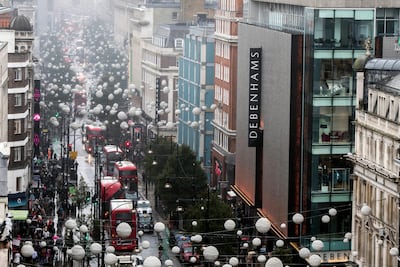The Mayor of London has unveiled new plans to give one of the world’s busiest shopping districts a dramatic new makeover.
From December 2018 part of tourist hubbub Oxford Street will be transformed into a pedestrian boulevard, designed to give shoppers a safer and cleaner retail experience.
Under the proposals, the western stretch of the busy road from Orchard Street to Oxford Circus (or Selfridges to United Colors of Benetton) will be closed off to buses, cabs and cars.
While east to west traffic will be prohibited, north to south routes will be kept open to prevent gridlock on nearby streets.

London’s Mayor Sadiq Khan said the proposals, which are subject to a public consultation, would turn Europe’s most popular shopping street into “one of the finest public spaces in the world”.
“This is a hugely exciting moment for the capital. Oxford Street is world famous with millions of visitors every year, and in just over a year the iconic part of the street west of Oxford Circus could be transformed into a traffic-free pedestrian boulevard,” Mr Khan said.
“Whether you’re a local resident, a business, or shop in some of the area’s famous stores, our plans will make the area substantially cleaner and safer for everyone, creating one of the finest public spaces in the world”.

Mr Khan has implemented a range of measures to tackle air pollution in the British capital, which causes thousands of premature deaths every year.
New pictures released by the Mayor’s Office give Londoners a visual example of how Oxford Street could look without the steady flow of congestion, which is a daily feature of the shopping district.
_______________
Read more:
Hotel insider: Brown's Hotel, Mayfair, London
Bateel dates available at London's Selfridges
Luxury flats in brutalist style on Oxford Street
_______________
More seating areas would be built and the street would be risen to pavement level to make the whole area accessible for everyone. The measures also suggest an 800-metre piece of art could be commissioned running along the centre of the pedestrianised route.
New cycling routes and taxi ranks would be set up in adjoining areas across the rest of the West End to avoid traffic building up in other areas.

However, the plans have been met with disappointment by the union which represents the drivers of London’s world famous black cabs, who said the move would cause inconvenience to disabled passengers and tourists.
“The loss of taxi access to this section of Oxford Street will cause considerable inconvenience to disabled passengers, many of whom rely upon London’s fully-accessible taxi fleet to get around safely and conveniently,” said Richard Massett, Chairman of the Licensed Taxi Drivers' Association.
“The door-to-door service that taxis offer is also relied upon by the millions of tourists who visit Oxford Street every year. Their needs have clearly not been considered.”


